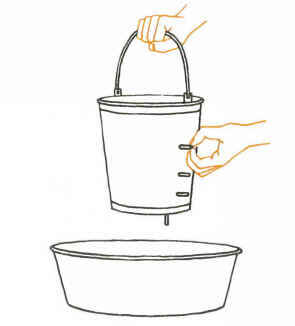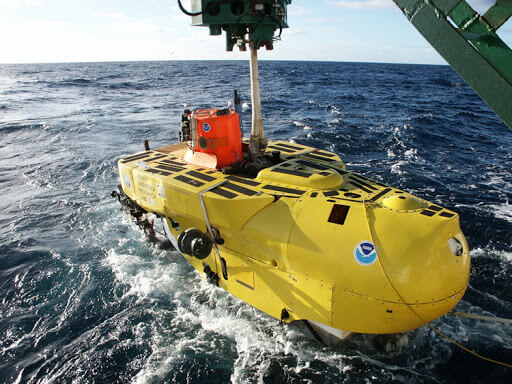How does water pressure change as water depth increases? Why does the pressure change as water gets deeper?
If you have ever made a deep dive, you have felt the force of water pressing on your body. This force is caused by the pull of gravity. Like all other materials, water has weight. So gravity pulls down on water wherever it is. Because of this downward pull of gravity, water exerts a force below the surface.
You expect water to push down because of the pull of gravity. But you were probably surprised to find that water pushes sideways and upward as well as downward. From the same point, water will pour out through a hole in the bottom of a pail, run out through a hole in the side, or squirt up through a hole into a can. So you can see that below the surface water pushes in all directions. Careful measurements show that the water at any point exerts an equal force in every direction. Yet whatever the direction is, gravity causes the force inside the water.
When we are working with this force, we often need to use the word pressure. You have used this word many times to mean about the same thing as force. However, to a scientist, force and pressure have different meanings. You know that a force is any push or pull. But pressure means the amount of force on a certain area. In the English system, pressure is usually measured in pounds per square inch. Very great pressures are sometimes stated in tons per square foot.
Water pressure is important to such people as builders of dams and water systems, submarine crews, and deep-sea divers. You would probably feel uncomfortable 15 feet under water. But a diver can go down into the water about 400 feet in an ordinary diving suit. To go deeper, he must get into strong metal armor that is very heavy and clumsy. In 1960, two men reached the greatest depth so far when they went down 7 miles into the Pacific Ocean near the island of Guam. A special diving device called a bathyscaphe (bath’a skaf) was used. The men were inside a hollow steel ball 7 feet in diameter having walls 3/2 inches thick and weighing nearly 13 tons. Why was so much protection needed?

HOW DOES THE DEPTH OF WATER AFFECT ITS PRESSURE?
- With a hammer and nail punch a hole in the bottom of a pail near the side. Punch another hole in the side just above the first one. Put tight wooden plugs in the holes. Then fiil the pail about half full of water.
- Hold the pail over a sink or wide pan. Take the plug out of the hole in the bottom. In what direction does the water move? Why?
- Close the hole in the bottom and take the plug out of the hole in the side. In what direction does the water move this time? Why? Put the plug back in the hole.
- Punch a hole in the bottom of a can. Then push the can, bottom first, down into the water in the pail. In what direction does the water move through the hole in the can? Why?
- Punch a hole in the side about 4 inches from the top. Punch another hole about halfway between the two holes now in the side. Put tight wooden plugs in all the holes. Then fill the pail with water.
- Hold the pail over a sink or wide pan. Take the plugs out of all three holes in the side. Through which hole does the water move with most force? Least force? How do you know? What does this experiment show about water pressure?
Some people think that the size or shape of a container makes a difference in the pressure at the bottom. But careful measurements show that this is not true. The pressure depends only on the depth of the water. For example, if the water in a tank is 10 feet deep, the pressure at the bottom is 4.3 pounds per square inch, no matter what the size or shape of the tank may be. The pressure is also 4.3 pounds per square inch 10 feet below the surface of a stream or lake, which is far bigger than the tank.
“Water seeks its own level.”
By using what you have just learned about water pressure, you can explain why this saying is true. If a pipe of any size or shape is connected to a tank of water, the water rises in the pipe until it is level with the water in the tank. Then the pressure of the water in the pipe is equal to the pressure of the water in the tank. If more water is added to either side, the extra water makes the depth greater on this side. So the pressure on this side is greater. The increased pressure sends water into the other side until the two pressures are equal once more. When this happens, the water in the tank is again level with the water in the pipe.
